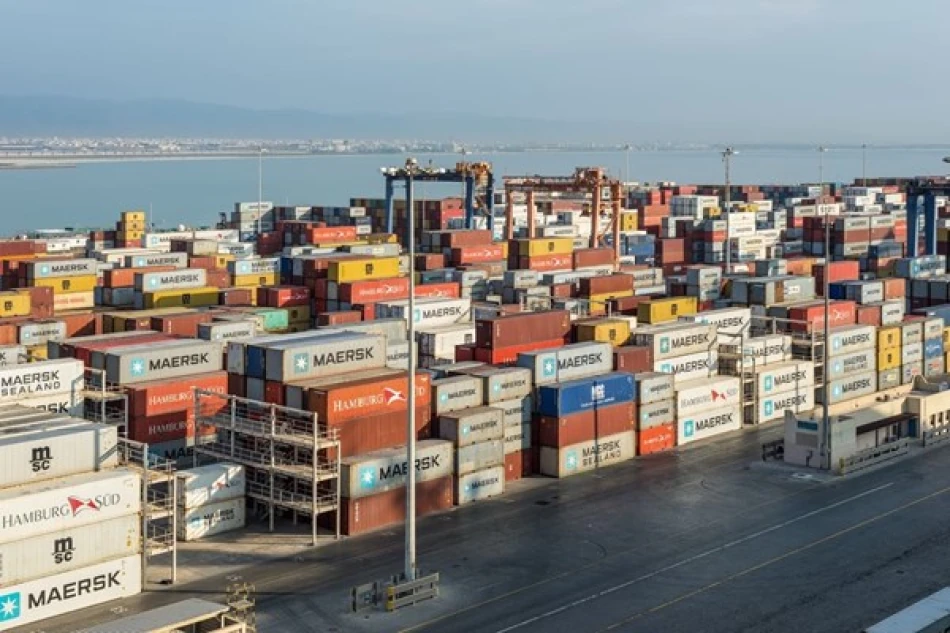
Oman's Ports Witness Robust Container Handling and Vessel Traffic Growth
Oman's Ports Surge 11.7% in Container Traffic as Gulf Trade Routes Shift
Oman's strategic ports have emerged as major winners in the evolving Middle Eastern logistics landscape, with container handling jumping 11.7% and ship traffic rising 11.1% in the first half of 2025. The sultanate processed over 70 million tons of cargo across its three flagship ports, positioning itself as a serious challenger to Dubai's regional dominance while capitalizing on Red Sea shipping disruptions and growing India-Gulf trade corridors.
Record Performance Across Key Maritime Hubs
The ports of Salalah, Sohar, and Duqm collectively handled 2.427 million standard containers in the first six months of 2025, compared to 2.173 million containers during the same period in 2024. This represents a substantial 254,000 container increase that reflects both organic growth and likely traffic diversion from competing regional hubs.
Ship arrivals totaled 6,586 vessels, up from 5,930 in the previous year's first half. Total cargo volume reached 70.114 million tons—a 5.2% increase—while the ports processed 50,240 vehicles and handled over 2.694 million livestock, underscoring Oman's role as a critical gateway for diverse trade flows between Asia, Africa, and the Arabian Peninsula.
Infrastructure Expansion Targets Regional Leadership
The performance surge coincides with Oman's aggressive infrastructure development program under Vision 2040. The Ministry of Transport, Communications and Information Technology has awarded contracts for several transformative projects, including the development of Khor Jarama port, rehabilitation of Shannah and Masirah harbors, and construction of a marine fuel processing and storage center at Shinas Port.
These investments signal Oman's intention to capture a larger share of the $200 billion annual trade flowing through Gulf waters, particularly as global shipping lines seek alternatives to increasingly congested Dubai and potential geopolitical risks affecting Iranian and Saudi routes.
Market Implications and Competitive Positioning
For shipping companies and logistics operators, Oman's port expansion offers compelling alternatives to traditional Gulf hubs. Salalah's position outside the Strait of Hormuz provides strategic insurance against regional tensions, while Sohar's industrial integration creates opportunities for value-added services that pure transshipment ports cannot match.
Regional competition is intensifying as Saudi Arabia develops King Abdullah Port and Qatar expands Hamad Port capacity. However, Oman's geographic advantage—with direct access to both the Arabian Sea and proximity to major Asian shipping lanes—provides natural competitive moats that pure investment cannot easily replicate.
Benefiting from Global Trade Realignment
The 11.7% container growth likely reflects broader shifts in global trade patterns. As companies diversify supply chains away from over-reliance on Chinese manufacturing, India's emergence as an alternative production hub naturally benefits Oman's ports, which serve as logical intermediary points for India-Gulf-Europe trade corridors.
Additionally, ongoing Red Sea shipping disruptions caused by regional conflicts have pushed more cargo through Gulf of Oman routes, creating temporary but significant volume increases that Oman appears well-positioned to convert into permanent market share gains.
Investment and Economic Multiplier Effects
The port performance surge extends beyond maritime statistics to broader economic implications. Enhanced port capacity typically generates 3-4 times its direct economic impact through logistics, warehousing, and manufacturing spillovers. For Oman's economy, diversifying away from oil dependence, these logistics revenues provide crucial non-hydrocarbon income streams.
The livestock handling figures—over 2.6 million head—also highlight Oman's growing role in regional food security, as Gulf states increasingly source protein imports through diversified routes to reduce supply chain vulnerabilities exposed during recent global disruptions.
 Layla Al Mansoori
Layla Al Mansoori







